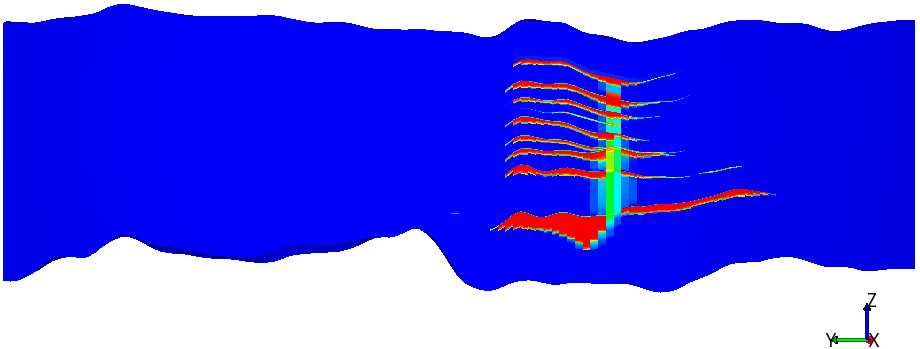Geological storage of CO2 will be necessary in the future to combat climate change. However, storing CO2 underground at the necessary scales will require high-performance numerical simulation tools that do not exist today. In the ACROSS project, we aim take significant steps towards the development of such tools.
Description
Carbon capture and storage (CCS) refers to the practice of capturing CO2 from industrial processes and storing it deep underground as a way to reduce greenhouse gas emissions. Practically all realistic scenarios developed by the Intergovernmental Panel on Climate Change (IPCC) and the International Energy Agency (IEA) require world-wide, large-scale CO2 capture and storage in order to reach internationally agreed climate targets.
Large subsurface aquifers with saline water are considered among the most suitable places to store CO2 underground, as they are found in abundance throughout the world, often have excellent storage properties, and have no other economic value as they neither contain freshwater nor hydrocarbon resources. One prominent example is the Sleipner site in the Utsira formation off the coast of Norway, where CO2 resulting from nearby oil and gas activities has been injected for more than 20 years at a rate of approximate 1 million tonnes per year, corresponding to about 2% of Norwegian emissions. For studying, planning and understanding long-term effects of storing CO2 in the underground, numerical simulations are essential. At the size of operations currently seen at Sleipner (field scale), state-of-the-art industrial simulators from the oil and gas industry can be useful, though the particular physics and long time-spans involved remain a challenge. However, in order to store CO2 in quantities required by climate scenarios to meaningfully combat climate change, we must consider operations at scales several orders of magnitudes larger than today’s practices. The simulation and analysis of billions of tonnes of CO2 at the regional scale, with potential impacts reaching thousand years into the future, pose computational requirements that far surpass the capabilities of today’s commercial tools. Successful development of large-scale simulators able to tackle these types of problems by efficient use of emerging HPC capabilities will therefore be key to enabling safe CO2 storage at the scales necessary for global climate mitigation.

Objectives
In this project, we seek to transform the open-source subsurface simulator OPM Flow towards becoming a truly high-performance computing tool capable to address large-scale CO2 storage scenarios.
OPM Flow is an open-source reservoir simulator, appropriate for industrial usage as well as providing a good basis for research. Currently, it is used at an industrial level for simulating oil recovery in fields on the Norwegian Continental Shelf, and for research on CO2 applications such as CO2-enhanced oil recovery and CO2 sequestration. OPM Flow includes MPI parallelization of the most important parts of the simulator, but currently with limited scalability. Through the work in ACROSS we aim to build on OPM Flow to achieve:
- flexible, high-performance and massively parallel simulations of large scale CO2 storage in an open-source program;
- Achieving robust, high-erformance and adaptive reservoir simulation on geomodels extracted automatically from seismic data (thereby reducing the need for expensive model-building steps);
- Performing in-situ (real time) analysis and visualisation workflows on large result sets;
- Defining new workflows for analysis and assessment of reservoirs that are supported by machine learning and artificial intelligence tools.


